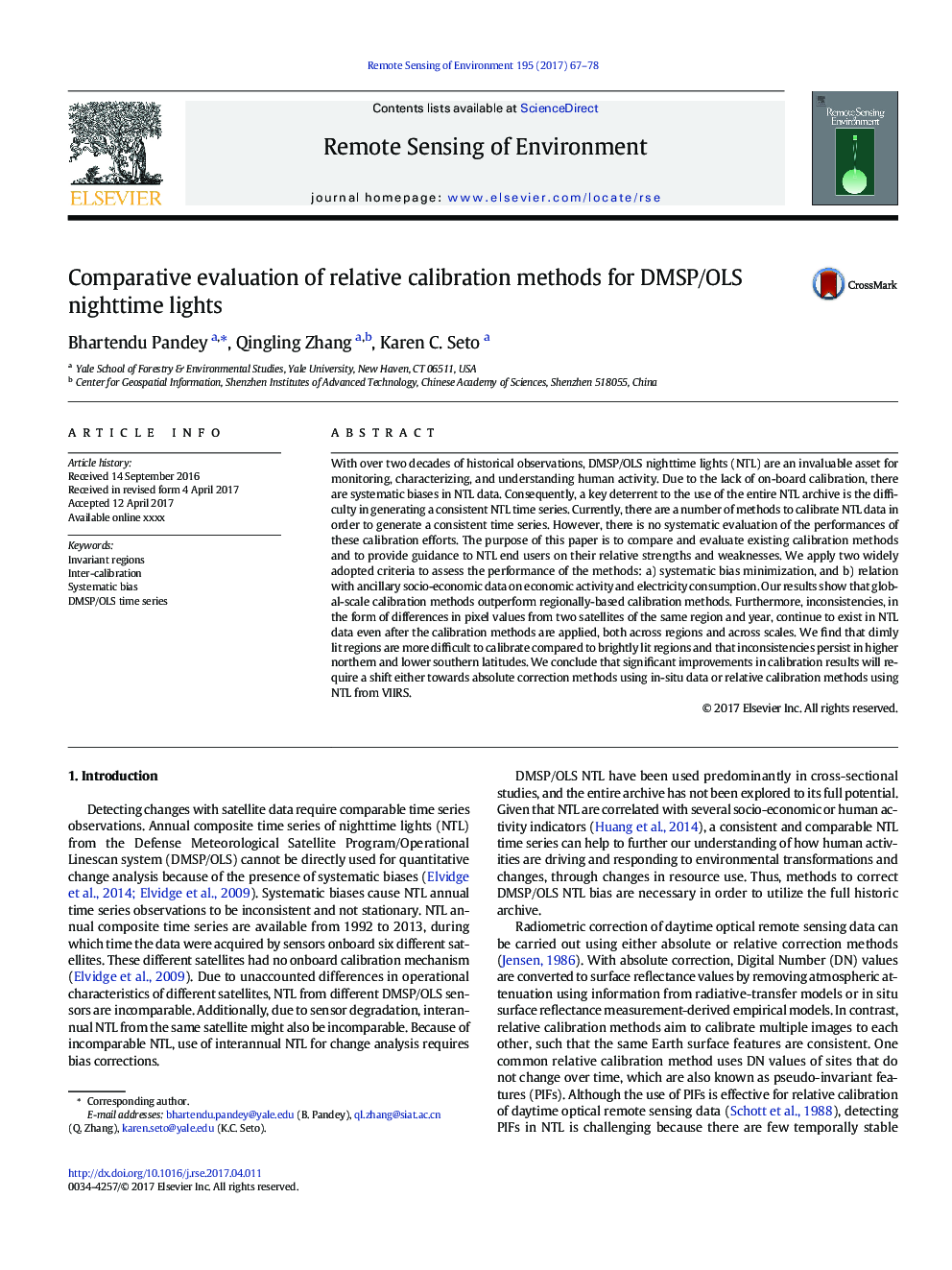| Article ID | Journal | Published Year | Pages | File Type |
|---|---|---|---|---|
| 5754806 | Remote Sensing of Environment | 2017 | 12 Pages |
Abstract
With over two decades of historical observations, DMSP/OLS nighttime lights (NTL) are an invaluable asset for monitoring, characterizing, and understanding human activity. Due to the lack of on-board calibration, there are systematic biases in NTL data. Consequently, a key deterrent to the use of the entire NTL archive is the difficulty in generating a consistent NTL time series. Currently, there are a number of methods to calibrate NTL data in order to generate a consistent time series. However, there is no systematic evaluation of the performances of these calibration efforts. The purpose of this paper is to compare and evaluate existing calibration methods and to provide guidance to NTL end users on their relative strengths and weaknesses. We apply two widely adopted criteria to assess the performance of the methods: a) systematic bias minimization, and b) relation with ancillary socio-economic data on economic activity and electricity consumption. Our results show that global-scale calibration methods outperform regionally-based calibration methods. Furthermore, inconsistencies, in the form of differences in pixel values from two satellites of the same region and year, continue to exist in NTL data even after the calibration methods are applied, both across regions and across scales. We find that dimly lit regions are more difficult to calibrate compared to brightly lit regions and that inconsistencies persist in higher northern and lower southern latitudes. We conclude that significant improvements in calibration results will require a shift either towards absolute correction methods using in-situ data or relative calibration methods using NTL from VIIRS.
Related Topics
Physical Sciences and Engineering
Earth and Planetary Sciences
Computers in Earth Sciences
Authors
Bhartendu Pandey, Qingling Zhang, Karen C. Seto,
